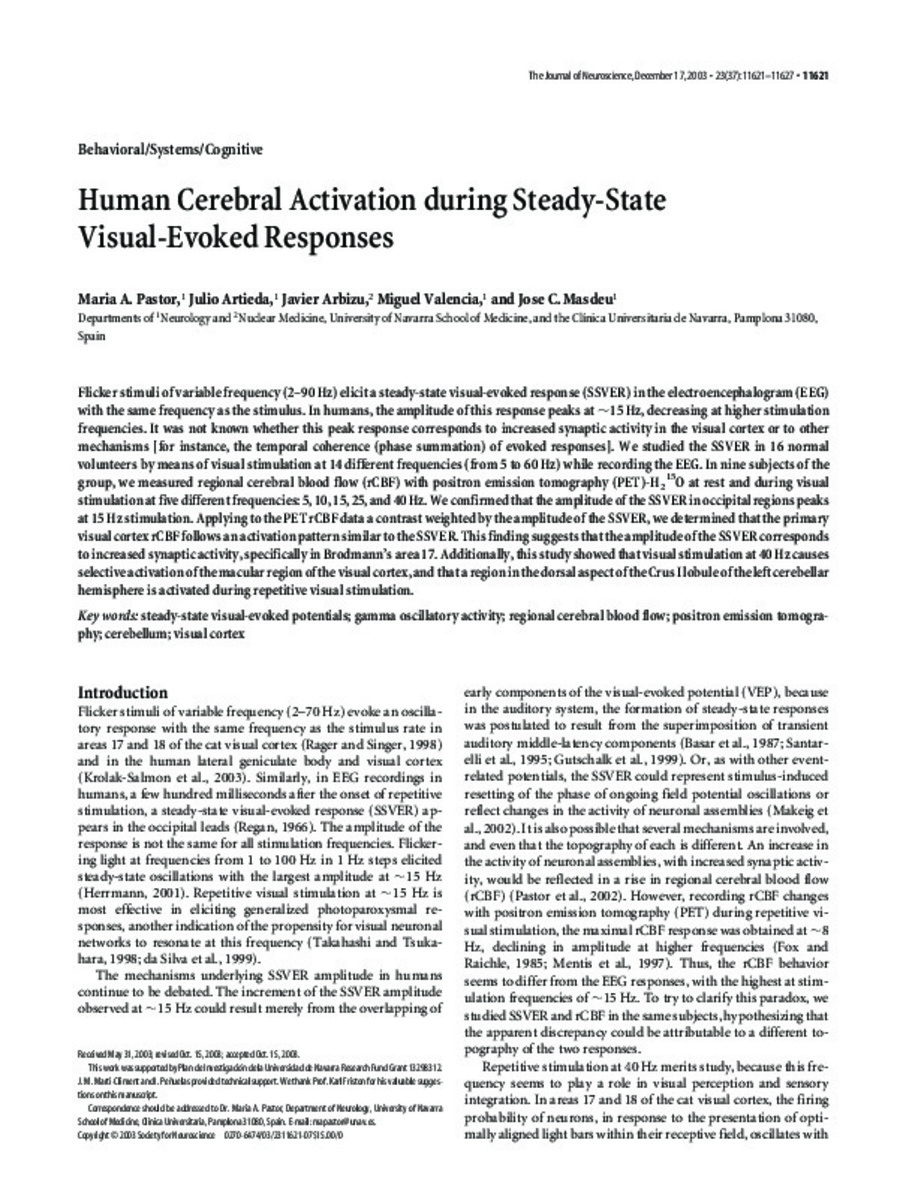Human Cerebral Activation during Steady-State Visual-Evoked Responses
Palabras clave :
Brain/anatomy & histology/radionuclide imaging
Cerebellum/physiology
Cerebrovascular Circulation
Fecha de publicación :
2003
Editorial :
Society for Neuroscience
Cita:
Pastor MA, Artieda J, Arbizu J, Valencia M, Masdeu JC. Human cerebral activation during steady-state visual-evoked responses. J Neurosci 2003 Dec 17;23(37):11621-11627.
Aparece en las colecciones:
Estadísticas e impacto
0 citas en

0 citas en

Los ítems de Dadun están protegidos por copyright, con todos los derechos reservados, a menos que se indique lo contrario.









